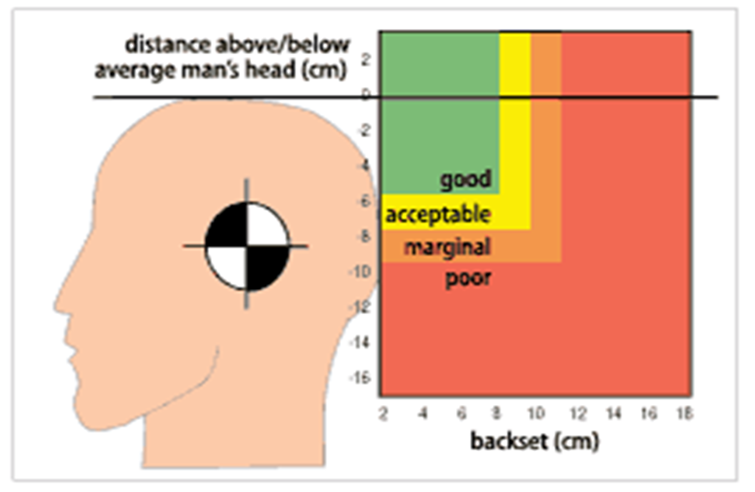Sacroiliac Joint Dysfunction, A PAIN in the BUTT!
Patients presenting with Sacroiliac (SI) joint pain tend to think they either have sciatica or tail-bone pain, and its common practice for doctors to the link low back pain with protruding disc even when neurological signs are absent. Pain caused by sacroiliac joint dysfunction can mimic discogenic (pain from the disc) or radicular low back pain, although, SI joint dysfunction is a distinct condition of its own. At Integrity Chiropractic, our doctors are keenly aware of the differences of pain presentations and utilize diagnostic skills to diagnose the SI joints, vs. facet joints, vs. disc, vs. ligamentous instability as the source of your pain.
The Anatomy
SI joint dysfunction is typically a very painful condition involving the joints that connect the three bones of your pelvis. The SI joint has rich pain nerves arising from the L2–S2 roots, and its posterior aspect is innervated by the posterior rami of L4–S3. The sacroiliac joints are formed by the sacrum, a bone at the bottom of the spine, located centrally at the beltline, along with the large iliac bones located on the left and right of the pelvis. Because of their anatomical position, SI joints can sometimes be considered part of your lower back or your pelvis. These joints support the upper body when it’s in an erect position.
What Causes SI Joint Dysfunction?
SI joint dysfunction is often caused by a fall or injury, but it can also appear without a clear cause. Postural changes due to an increased low back curve (hyperlordosis) or large abdominal size associated with obesity can irritate these joints. Structural imbalances in the legs such one shorter than the other (anatomical short leg), or having flat feet (pes planus) can also be causative. Moreover, muscular imbalances in the lower back or hips (lower cross syndrome) can irritate the SI joints. Sporting activities that require frequent use of these joints, such as running sports, golfing and figure skating may result in SI joint dysfunction.
Additionally, this joint problem often affects pregnant women. Ligaments holding SI joint have the main function to limit its mobility. Hormonal changes occurring during pregnancy can cause ligaments to relax through hormonal control (relaxin secretion). When this happens, the SI joints have a more extended range of motion and the broader flexibility along with the weight of a growing belly can lead to abnormal stress and inflammation on the joints.
If you have SI joint dysfunction, you may feel pain in various parts of your lower body to include the entire leg and including the spine, Fortunately, Integrity Chiropractic can help in this situation. In fact, a study revealed “91% of women with sacroiliac/pelvic subluxations and lower back pain reported relief of pain with chiropractic adjustments.”
The Integrity Chiropractic Approach to a Baffling Condition
How does Integrity Chiropractic determine if you suffer from sacroiliac joint dysfunction / inflammation?
First, a detailed health history is important. Many times, a correct diagnosis can be drawn from the history alone. Second, a functional physical examination to include orthopedic tests and active ranges of motion will be conducted to thoroughly exhaust all the above listed potential causes of pain. In fact, three specific physical tests showed great correlation with the diagnosis of SIJ dysfunction:
- SI Joint compression test (94% agreement)
- The thigh thrust test (90%) agreement
- Yeoman’s test (88%) agreement.
Dr. Leatherman and Dr. Bak utilize these tests on every initial physical examination as well as other orthopedic and neurological tests that help differentiate the SI joint from the facet joints and the disc as pain generators. X-rays may also be necessary for visualization of the joints as well.
If your pain can be reproduced by these special orthopedic tests, challenging the structure of the SI joints, this increases your odds of having a dysfunction of these joints vs other anatomical structures.
Applying direct pressure to one of the SI joints, or to the base of the sacrum with a manual spinal manipulation (adjustment) is one of the main techniques used by Integrity Chiropractic to improve the SI joint mechanics. The goal is to normalize both the movement and position of this area and reduce inflammation to resolve the pain.
However, You may also be required to complete stretching and strengthening exercises for your lower back and pelvis areas to correct posture problems and gait patterns that may contribute to the inflammation of these joints. If excessive motion of the SI joints is thought to be the cause of the pain, (such as in pregnancy) Dr. Leatherman or Dr. Bak may recommend that you wear a special belt around your waist to stabilize the joints. It is important to understand though that instability of the SI joints is much less frequent than a restriction of proper motion.
Can You Stop SI Problems Before They Happen?
Often the answer is yes, and a quote by Ben Franklin sums this up nicely … “An ounce of prevention is worth a pound of cure.”
Maintaining proper posture, flexibility and an overall good physical condition helps prevent many problems related to joints, muscles and bones. The second piece of advice is to walk 1-2 miles daily at a brisk pace. Third, shed excess fat pounds as too much body weight (especially abdominal fat weight) places pressure on the joints and increases the possibility of inflammation and injury.
Lastly, periodic chiropractic adjustments and following Integrity Chiropractic lifestyle advice increases your chances of living a life virtually free of muscle and joint pain.
References:
- Wong M, Kiel J. Anatomy, Abdomen and Pelvis, Sacroiliac Joint. [Updated 2019 Feb 6]. In: StatPearls [Internet]. Treasure Island (FL): StatPearls Publishing; 2019 Jan-. Available from: https://www.ncbi.nlm.nih.gov/books/NBK507801/
- Slipman C, Patel R, Shin C, Braverman D, Lenrow D, - Pain Management: Studies probe complexities of sacroiliac joint syndrome – Biomechanics, April 2000
- Pain Physician. 2001 Apr;4(2):143-52. Sacroiliac joint syndrome. Slipman CW1, Whyte WS 2nd, Chow DW, Chou L, Lenrow D, Ellen M.https://www.ncbi.nlm.nih.gov/pubmed/16902687
- Sacroiliac subluxation: a common, treatable cause of low-back pain in pregnancy Daly JM, Frame PS, Rapoza PA. Fam Prac Res J 1991;11(2):149-159 https://www.ncbi.nlm.nih.gov/pubmed/1829312
- The Journal of Orthopaedic and Sports Medicine Sections of the American Physical Therapy Associaton: Dysfunction of the Sacroiliac Joint and Its Treatment* RICHARD L. DONTIGNY, BS, PT. https://www.jospt.org/doi/pdf/10.2519/jospt.1979.1.1.23
- Pain Medicine and Management by Mark S. Wallace & Peter Staats, McGraw-Hill Professional, 2004
- The Role of Sacroiliac Joint Dysfunction in the Genesis of Low Back Pain: The obvious is not always right Archives of Orthopaedic and Trauma Surgery. December 2007 [e-pub] https://www.ncbi.nlm.nih.gov/pubmed/17828413
- Bergström C, Persson M, Mogren I, Pregnancy-related low back pain and pelvic girdle pain approximately 14 months after pregnancy – pain status, self-rated health and family situation. BMC Pregnancy and Childbirth. 2014:14:48. https://bmcpregnancychildbirth.biomedcentral.com/articles/10.1186/1471-2393-14-48
- Yoo H, Shin D, Song C, Changes in the spinal curvature, degree of pain, balance ability, and gait ability according to pregnancy period in pregnant and nonpregnant women. J of Physical Ther Sci. 2015. 27(1):279-284. https://www.ncbi.nlm.nih.gov/pubmed/25642091
- Laslett M. Evidence-based diagnosis and treatment of the painful sacroiliac joint. J Man Manip Ther. 2008;16(3):142–152. doi:10.1179/jmt.2008.16.3.142 https://www.ncbi.nlm.nih.gov/pmc/articles/PMC2582421/
- Ward JS, Coats J, Sorrels K, Walters M, Williams T. Pilot study of the impact sacroiliac joint manipulation has on walking kinematics using motion analysis technology. J Chiropr Med. 2013;12(3):143–152. doi:10.1016/j.jcm.2013.05.001
https://www.ncbi.nlm.nih.gov/pmc/articles/PMC3838716/









